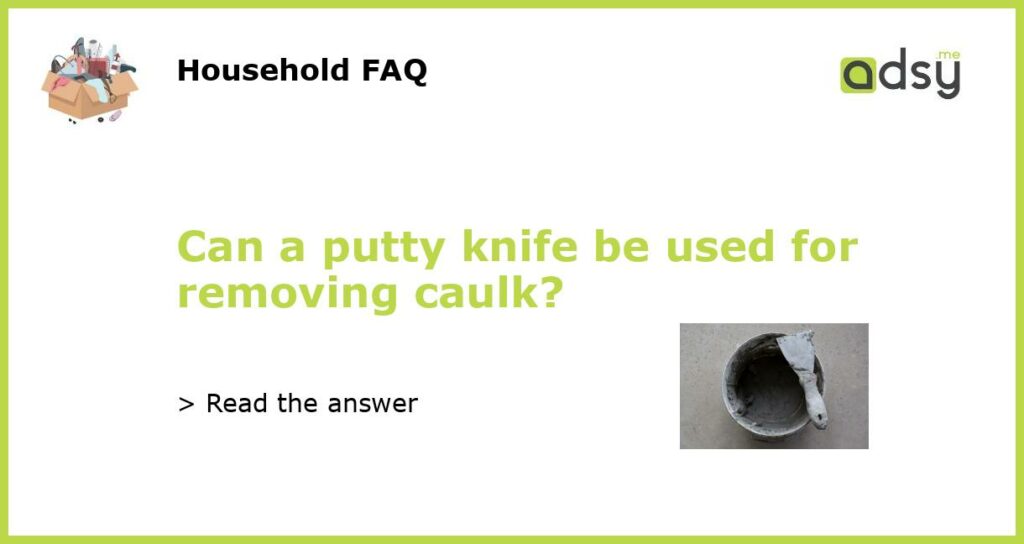Can a Putty Knife be Used for Removing Caulk?
Why Caulk Needs to be Removed
Caulking is commonly used to seal gaps and cracks in buildings, providing protection against air and moisture infiltration. However, there are times when caulk needs to be replaced or removed, such as when it becomes old, damaged, or outdated. In these cases, using a putty knife can be a useful tool for removing caulk.
The Benefits of Using a Putty Knife
A putty knife is a versatile tool that can be used for a variety of tasks, including removing caulk. There are several benefits to using a putty knife for this purpose:
- Effectiveness: Putty knives are designed with a thin, flat blade that is ideal for scraping and removing caulk. The sharp edge of the blade allows for precise removal and scraping without damaging the underlying surface.
- Control: Putty knives provide excellent control and maneuverability when removing caulk. Their compact size and ergonomic design make them easy to handle and maneuver into tight spaces.
- Versatility: Putty knives come in various sizes and shapes, making them suitable for different caulk removal tasks. Whether you need to remove large caulk beads or small, stubborn remnants, there is a putty knife that can get the job done.
Using a Putty Knife to Remove Caulk
The process of using a putty knife to remove caulk is relatively straightforward, but it does require some technique and caution:
- Start by preparing the area. This involves cleaning the surface and removing any loose debris or caulk remnants.
- Hold the putty knife at a slight angle and insert the blade between the caulk and the surface. Begin scraping the caulk, applying gentle pressure and using short, controlled strokes.
- Continue scraping until all of the caulk has been removed. It is important to be patient and take your time to ensure thorough removal.
- Once the caulk has been removed, use a damp cloth or sponge to clean the surface and remove any remaining residue.
- Finally, allow the surface to dry completely before applying new caulk or other sealant.
When a Putty Knife may not be Suitable for Caulk Removal
While a putty knife is generally effective for removing caulk, there may be situations where it may not be the best tool for the job:
- Delicate surfaces: Using a putty knife on delicate surfaces, such as soft plastics or finished wood, may cause damage. In these cases, it is advisable to use alternative tools such as a silicone removal tool or a heat gun.
- Large caulk beads: If the caulk bead is particularly large or thick, a putty knife may struggle to remove it efficiently. In these cases, using a caulk removal tool or a multi-tool with a caulk removal accessory may be more effective.
- Difficult caulk: Some caulk may be more difficult to remove than others, especially if it has hardened or adhered firmly to the surface. In these cases, it may be necessary to soften the caulk with a caulk softener or heat gun before attempting removal with a putty knife.
A putty knife can be a useful tool for removing caulk, offering effectiveness, control, and versatility. However, it is important to consider the surface type and the caulk being removed before using a putty knife. In some cases, alternative tools or preparation methods may be more suitable.






